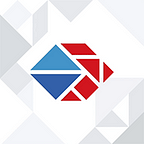Defense Innovation Beyond COVID-19
In this edition, Tangram Flex CEO, Ricky Peters, shares his insights about innovation the Defense industry. Ricky is the former Executive Director of the AFRL and has held high-ranking positions throughout the US Air Force, including roles as Director of Test and Evaluation at the Pentagon, Deputy Director of Air, Space, and Information Operations at Wright-Patterson Air Force Base, and Executive Director of the Arnold Engineering Development Center, and is a recipient of the Vice Presidential Award for Acquisition Reform.
We are all adjusting. Everywhere we look, industries and markets are transforming. From neighborhood coffee shops running curbside bodegas to tech giants announcing plans to permanently continue operations remotely, the ways we live, shop, and work are different than ever before.
Companies are experiencing unpredictability. There have been disruptions at every level– from the physical location of staff to technical infrastructure to production and manufacturing. Adaptation has been critical in every industry. In some cases changes are an attempt at survival. In others, companies are pivoting to capitalize on new market opportunities.
The defense industry is not insulated from the human and economic impacts of COVID-19. It’s no secret that innovation within the Department of Defense will be different– and the U.S. military’s efforts to develop new technologies and tactics may slow on the heels of the COVID-19 pandemic with moving targets on federal funding priorities. In a recent article, Dan Patt and Bryan Clark anticipate that we may need to do more with fewer resources as advanced research and development resumes.
It’s Mission-Critical
We have observed momentum in this direction over the past several years. The Department of Defense has been focused on adapting to change and managing the unpredictable even before COVID-19 demanded it. Rising to the pace of technological innovation is a key issue, demonstrated in well-publicized DoD initiatives like the AFRL Vanguard Programs and Advanced Battle Management System (ABMS).
Even at full capacity, changing the way the DoD acquires and evolves its systems is a tall order. At Tangram Flex, we agree with many points made in Patt and Clark’s article. What we will see in the post-pandemic world is innovation more focused on the reuse, reconfiguration, and redeployment of existing capabilities in different ways. Today’s missions demand new capabilities faster than the industry’s current tools and processes can accommodate.
Interoperability is the path forward.
Meeting the Need
Software has brought advantages to our defense systems beyond the realm of traditional mechanics, but at times there’s limited visibility into how it all works. The DoD’s use of open architectures is a big step forward and helps to support interoperability, but even in the commercial sector it still takes an average of 3–5 years to deploy new software functionalities to defense systems.
At Tangram Flex, we are focused on developing and sharing technology that compliments the innovation initiatives of the DoD. Our approach is rooted in uncovering new ways to understand and repurpose software systems. We’re experts in component-based engineering techniques, which means we are really good at solving puzzles.
Tangram Flex is named for the ancient Tangram puzzle. A Tangram puzzle has seven elements that form a perfect square. The puzzle pieces can be separated and rearranged to build entirely new shapes. In one configuration, a triangle-shaped piece is the beak of a rooster, while in another that same piece is the nose of a rocket. Each Tangram puzzle piece is a component of the shape it helps build.
The Tangram puzzle represents the three major steps Tangram Flex takes to solving integration and interoperability challenges for defense systems:
- Break down complex software systems into a set of components
- Create a library of components that can be shared and reused
- Update software systems with new and existing components
Each piece of a Tangram puzzle can be identified on its own. The way it is placed alongside the other pieces in a larger shape brings to life something new.
The New Normal
When the pandemic hit, we committed ourselves to action. Tangram Flex was set up for this. As a business, we didn’t have to change. Our team is equipped to work from their home offices and we are already walking with the defense industry to adapt to unparalleled rates of change. Our work is all about meeting the ‘new normal’ every day, and that is a constantly moving target.
Our mission is simple– we are here to help our customers solve software integration challenges. As the DoD adjusts, we remain committed to sharing our expertise and technology to keep pace with changing markets and missions while finding a few small ways to do our part (and give a shoutout to a few other local friends who were revisioning their businesses to help the fight).
Tangram Flex simplifies software integration for mission-critical defense systems. Every system is unique, but the mission is clear: the people on the ground need dependable, adaptable equipment to get the job done. At Tangram Flex, we understand the challenges of security, speed, and safety. Our team combines engineering expertise with our core product, Tangram Pro™, to arm customers with customized toolkits for meeting mission needs.
Tangram Flex is headquartered in Dayton, Ohio. Our staff has experience from DoD, Fortune 500 companies, and innovative software startups. We are dedicated to walking alongside our customers to keep pace with changes in technology. Get in touch: hello@tangramflex.com
